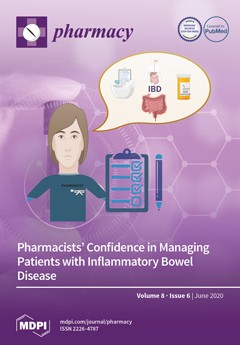Background. Several publications highlight data concerning multiple chronic conditions and the medication regimen complexity (MRC) used in managing these conditions as well as MRCs’ association with polypharmacy and medication non-adherence. However, there is a paucity of literature that specifically details the correlates
[...] Read more.
Background. Several publications highlight data concerning multiple chronic conditions and the medication regimen complexity (MRC) used in managing these conditions as well as MRCs’ association with polypharmacy and medication non-adherence. However, there is a paucity of literature that specifically details the correlates of MRC with multimorbidity, socioeconomic, physical and mental health factors in disadvantaged (medically underserved, low income) African American (AA) seniors.
Aims. In a local sample in South Los Angeles, we investigated correlates of MRC in African American older adults with chronic disease(s).
Methods. This was a community-based survey in South Los Angeles with 709 African American senior participants (55 years and older). Age, gender, continuity of care, educational attainment, multimorbidity, financial constraints, marital status, and MRC (outcome) were measured. Data were analyzed using linear regression.
Results. Higher MRC correlated with female gender, a higher number of healthcare providers, hospitalization events and multimorbidity. However, there were no associations between MRC and age, level of education, financial constraint, living arrangements or health maintenance organization (HMO) membership.
Conclusions. Disadvantaged African Americans, particularly female older adults with multimorbidity, who also have multiple healthcare providers and medications, use the most complex medication regimens. It is imperative that MRC is reduced particularly in African American older adults with multimorbidity.
Full article





